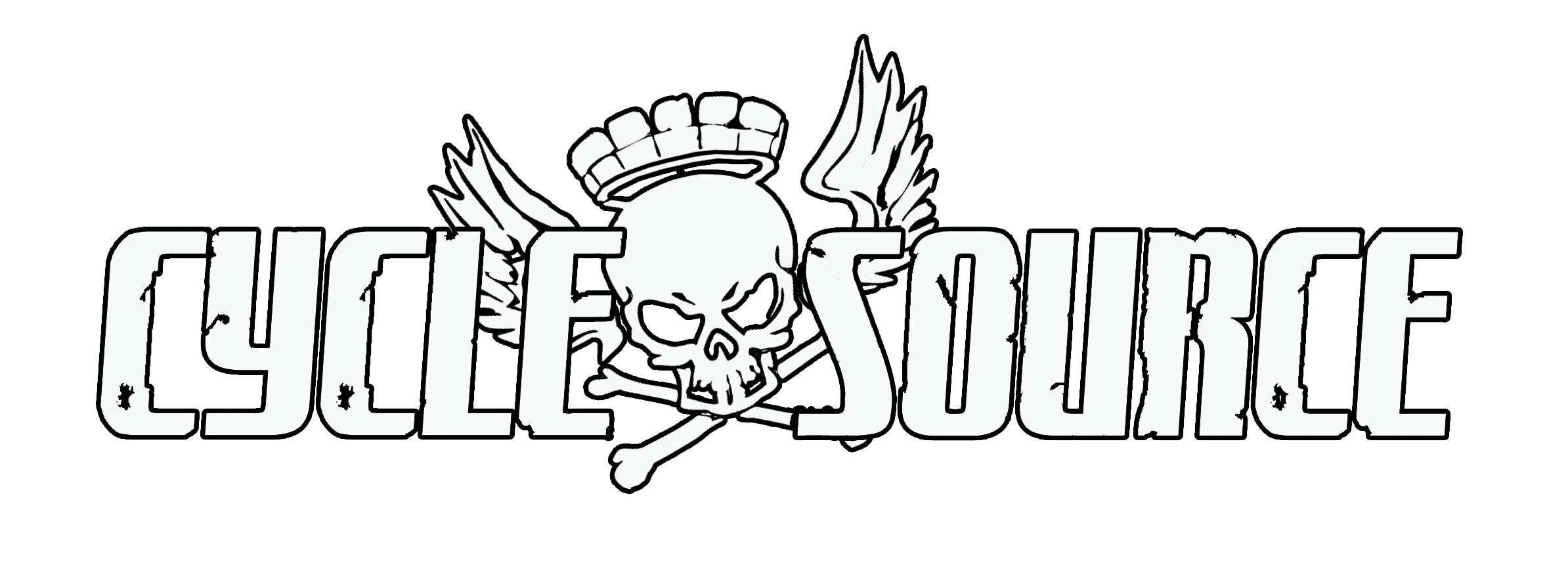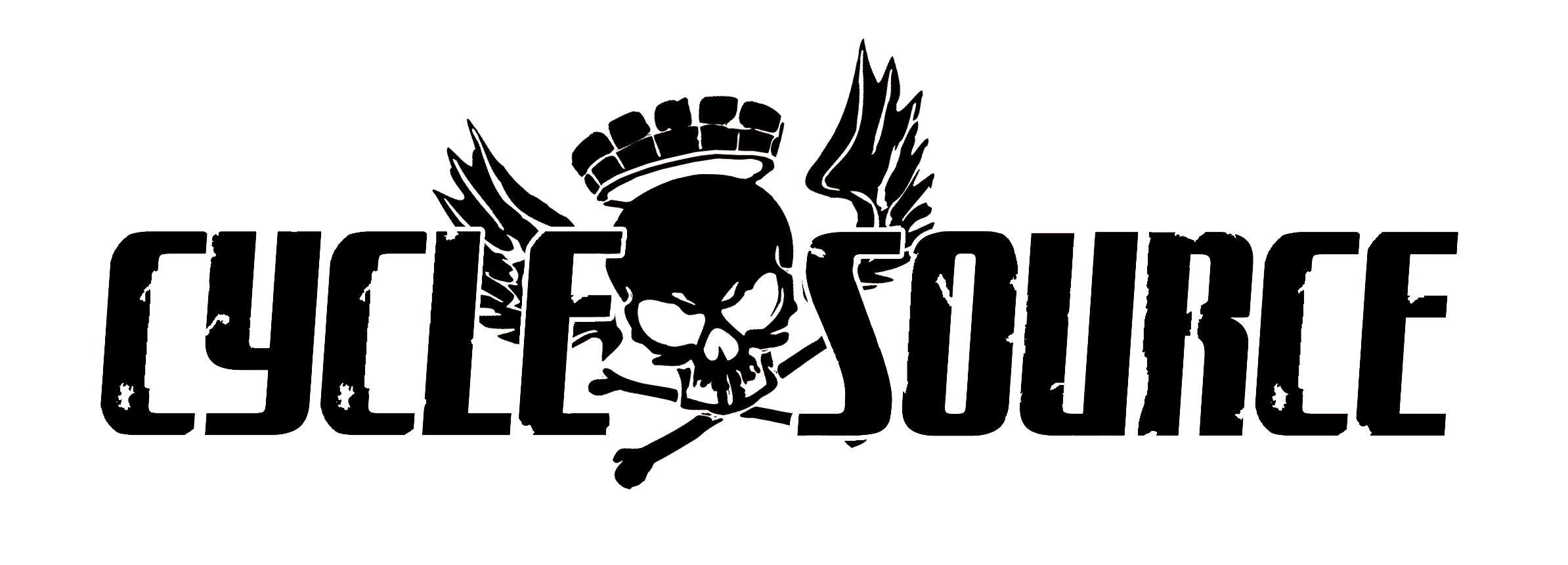Article And Photos By: Paul Wideman – www.bareknucklechoppers.com
Originally Published In The December 2012 Issue Of Cycle Source Magazine

This month, I am bringing you the first of a two-part article detailing how Lucas and The Factory Metal Works’ crew recreate vintage Triumph fork covers. We at Bare Knuckle help facilitate these fork covers being made by spinning the cover into its basic shape. We then ship them to TFMW where they are finished, fitted, packaged, and shipped to Triumph fanatics all over the globe. We get our material by the truckload from Shapiro Supply in St. Louis. It’s important to find a material supplier that provides you with quality American steel, and that the product is delivered in pristine condition. Any dents or dings in the material leads to waste.

Our shop apprentice cuts all of the stock into a rough length, and then cleans up the ends and deburrs the inside.


The mandrel we use is actually made of 1018 steel, as opposed to the maple mandrels we use for our fenders and some other projects. This is for a few reasons, but the main reason being that the exceptional force applied over the length of such a small diameter would be too much for a wooden mandrel to endure. Also, using steel allowed me to machine my mandrel into an exact replica of the original.
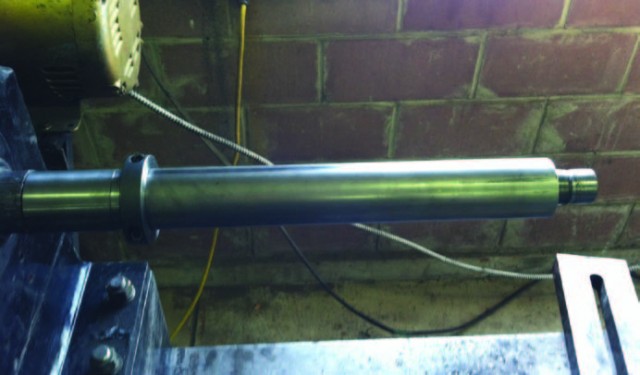
After spraying the mandrel down with an industrial lubricant, I position the stock on the mandrel. You will notice on the left side I have a shaft collar in place that clamps the material down on the mandrel to prevent slippage.

I start spinning the material from left to right, loosening, then stretching, then planishing the material until it lays smooth across the entire mandrel.
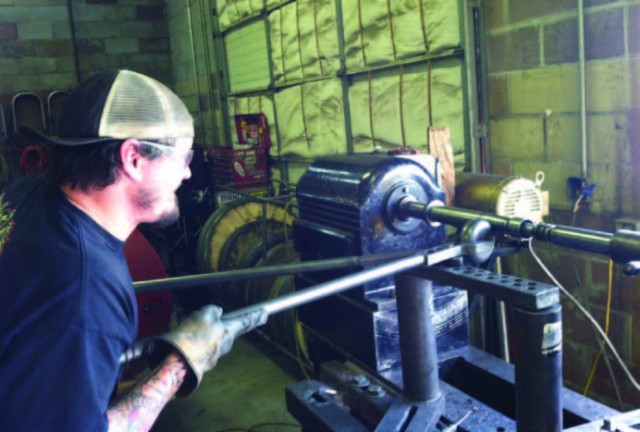
Cheaper than a gym membership.
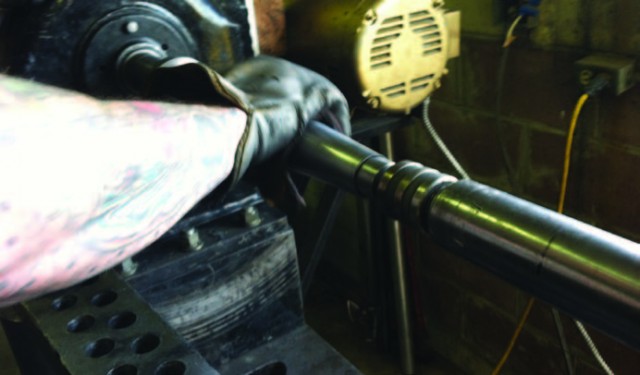
Using some heavy ScotchBrite, I finish the cover to semi-sheen.
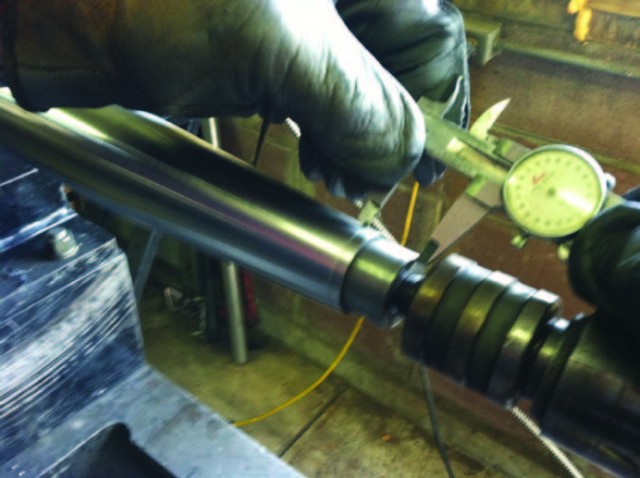
While the lathe is still spinning, I use my dedicated caliper to measure the predetermined length from the end of the mandrel to the cut line
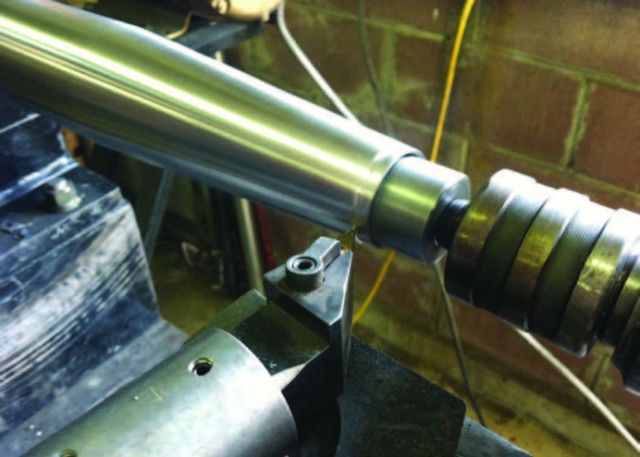
Using the cutoff tool, I trim the part to the exact length. Using this type of cutoff tool is very exact, but can also result in disaster if not done properly.
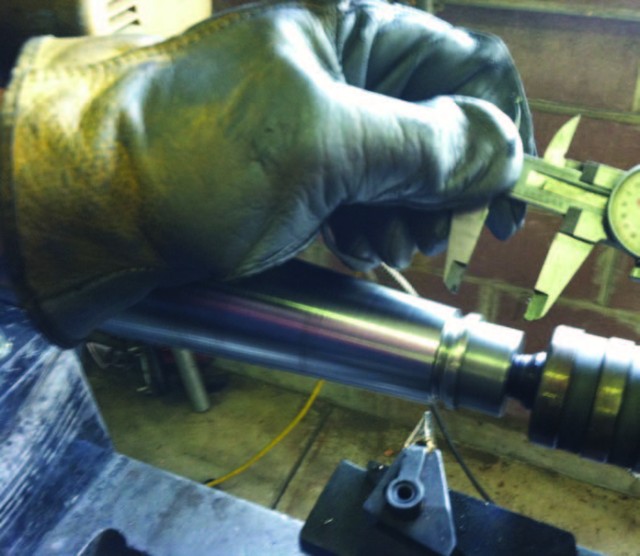
After the piece has parted, I double check my measurement. Sometimes a little additional trimming is necessary
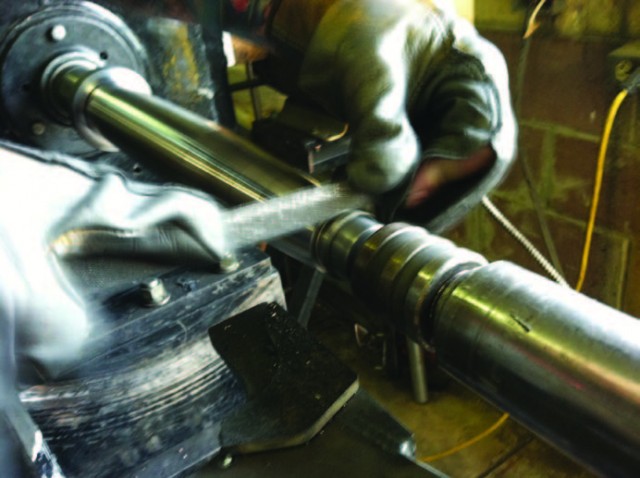
A quick file across the end deburrs the leading edge and leaves a finished tip. And yes, I go through gloves quickly and often in this line of work.
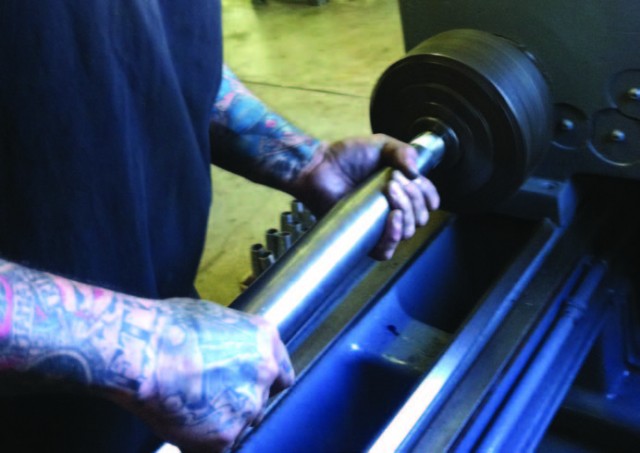
To deburr the inside of each piece, I use a deburring tool in the lathe. Don’t do this at home.

The half-finished product: shiny and to the exact specs of the originals.
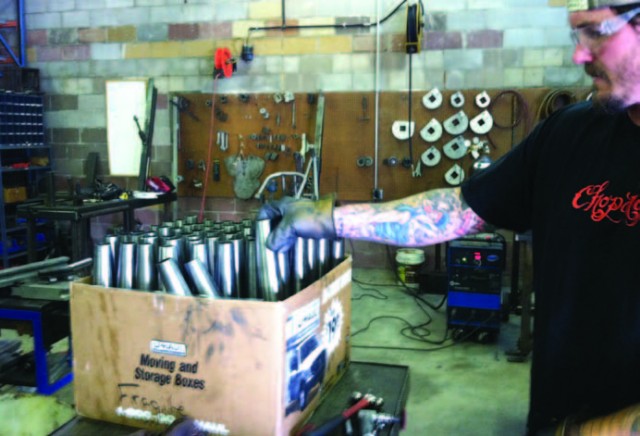
This box and another are headed to North Carolina for TFMW folks to put their touches on them, and then out to the thousands of Triumph builders around the world. Check us out next month and see what Lucas adds to make a great resto. piece.
